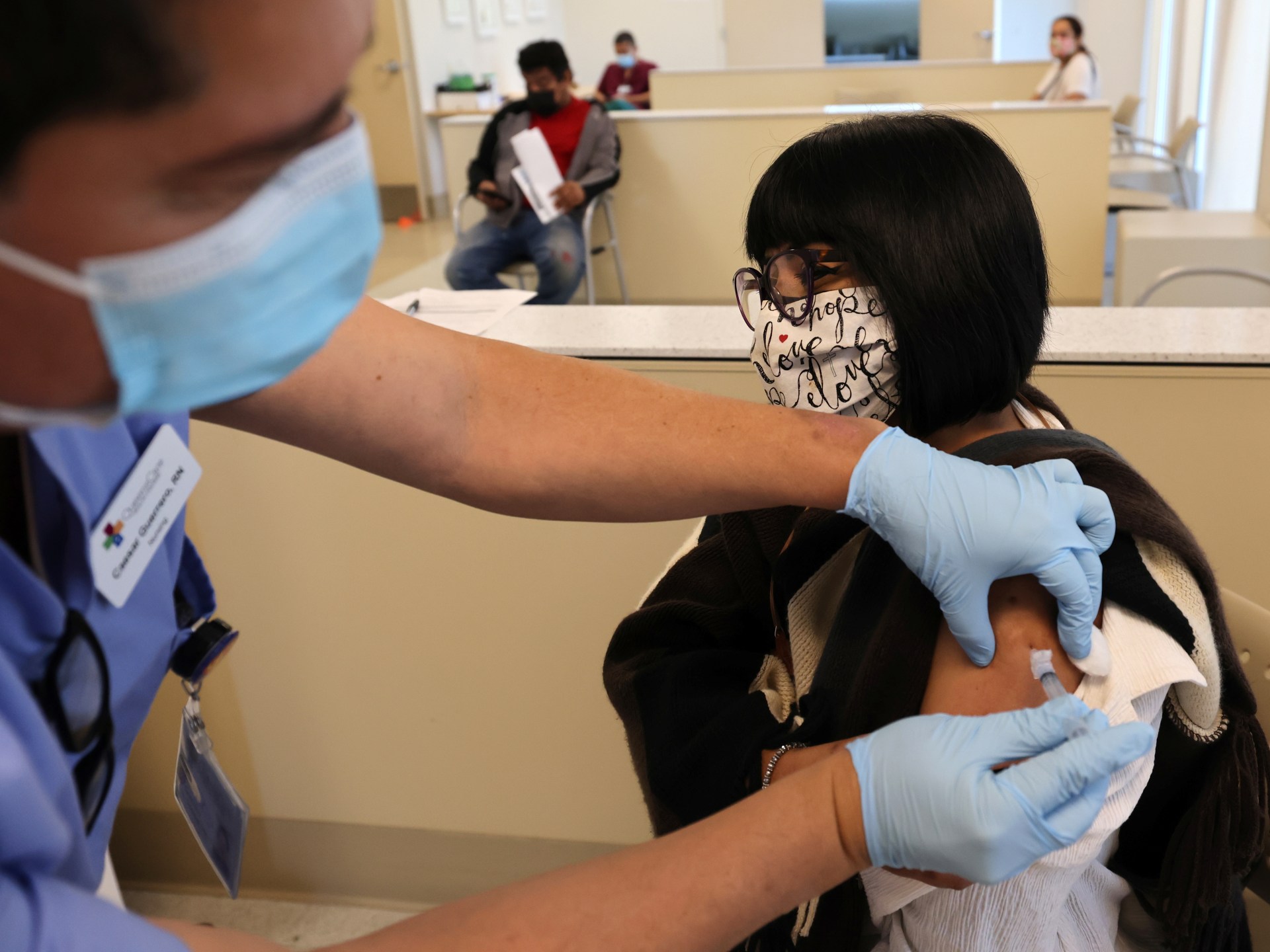In a lengthy June 24 X post that preceded the meeting, Kennedy, who spent two decades as an anti-vaccine movement leader, described thimerosal using terms such as “toxic” and said hundreds of studies identify it as a carcinogenic “potent neurotoxin”. He also said there are high doses of mercury in flu shots recommended to pregnant women and children.
The US Centers for Disease Control and Prevention’s Advisory Committee on Immunisation Practices’ (ACIP) two-day meeting on June 25 and 26 included discussion of vaccines containing thimerosal before its vote on flu vaccines.
ACIP is an independent group which provides vaccine recommendations the CDC director reviews and decides whether to formally adopt. Earlier in June, Kennedy dismissed 17 ACIP members, replacing them with seven new members, including people who’ve expressed doubt about vaccine efficacy and promoted anti-vaccine falsehoods.
Doctors and scientists who study vaccines have been researching thimerosal’s use for decades. Here’s what we know about the vaccine preservative and its removal from flu vaccines.

What is thimerosal?
Thimerosal is a mercury-based preservative used in some vaccines.
Many people – particularly those who are pregnant or breastfeeding – encounter warnings about consuming mercury, such as in seafood. But those warnings are about methylmercury, which is found in certain kinds of fish and is known to be toxic to people when consumed at high levels.
Thimerosal contains ethylmercury – a single-letter difference that might not sound significant, but is.
Human bodies can break down and excrete ethylmercury quickly, meaning it is less likely to cause harm. By contrast, methylmercury is more likely to accumulate in the body and cause harm.
In vaccines, thimerosal is added to prevent harmful microbes such as bacteria and fungi from growing in vaccine vials.
“Introduction of bacteria and fungi has the potential to occur when a syringe needle enters a vial as a vaccine is being prepared for administration,” the CDC’s website said. “Contamination by germs in a vaccine could cause severe local reactions, serious illness or death. In some vaccines, preservatives, including thimerosal, are added during the manufacturing process to prevent germ growth.”
Thimerosal has been at the heart of Kennedy’s anti-vaccine activism for 20 years.
In 2005, Kennedy wrote an article co-published by Rolling Stone and Salon that alleged leading health agencies including the CDC and US Food and Drug Administration had colluded with vaccine manufacturers to conceal a study that found thimerosal “may have caused autism in thousands of kids”. Scientists and researchers said Kennedy’s argument was inaccurate and misleading. Continued research has found no link between thimerosal and autism. Kennedy’s article was removed from Rolling Stone, and Salon retracted it in 2011.
In 2015, Kennedy wrote a book opposing thimerosal’s use in vaccines.
Which vaccines use thimerosal?
Thimerosal is not used in the vast majority of vaccines.
All vaccines the CDC routinely recommends for children age six or younger are available without thimerosal.
Children receiving the routine paediatric vaccine schedule “can get completely immunised without any thimerosal-containing vaccines”, said Dr Mark Sawyer, a paediatrics professor at the University of California San Diego School of Medicine and a paediatric infectious disease physician.
Some childhood vaccines have never contained thimerosal. These include the measles, mumps and rubella – or MMR – vaccine, the varicella or chickenpox vaccine, the inactivated polio vaccine and the pneumococcal conjugate vaccine.
Thimerosal was removed from most vaccines – including all childhood vaccines – as of 2001, the CDC said.
Thimerosal is still used in vaccines today, but not as widely.
The preservative is in only a small fraction of influenza vaccine vials, specifically the multi-dose vials that constitute a small portion of the US flu shot supply, Dr Jake Scott told PolitiFact. Scott is a Stanford University School of Medicine infectious disease specialist.
The FDA said thimerosal use has declined as vaccine manufacturers have developed more single-dose vaccines that do not require preservatives.
Scott said the CDC lists 12 influenza vaccine formulations for the 2024 to 2025 flu season, which will also cover the 2025 to 2026 season because no new flu vaccines have been licensed. Of those 12 vaccines, just three are multi-dose vaccines that contain thimerosal at 25 micrograms – equal to 25 millionths of a gram – per dose, he said.
CDC’s supply data shows single-dose, thimerosal-free syringes make up about 96 percent of the US flu vaccine supply, leaving roughly 4 percent as multi-dose vials, Scott said.
“Single-dose syringes are the default for paediatrics and prenatal care, so real-world exposure is even lower,” he said.
Because flu vaccines with thimerosal constitute a small portion of the influenza vaccine supply, public health experts told The Washington Post the committee’s vote to stop recommending them would have a limited impact, although it could make flu shots more expensive and less accessible in some parts of the US.
What does research show about thimerosal?
Because anti-vaccine activists’ focus has centred on whether thimerosal causes autism, numerous scientific studies have investigated a potential link and found no causal relationship between the preservative and autism.
When scientists evaluated thimerosal’s potential impacts and risks they found:
- Giving infants vaccines containing thimerosal “does not seem to raise blood concentrations of mercury above safe values in infants” as the ethylmercury “seems to be eliminated from blood rapidly via the stools” after vaccination.
- Three controlled and two uncontrolled observational studies “consistently provided evidence of no association” between thimerosal-containing vaccines and autism.
- “No scientific evidence exists that thimerosal-containing vaccines are a cause of adverse events among children born to women who received influenza vaccine during pregnancy.”
Vaccine researchers told PolitiFact that thimerosal was removed from vaccines out of an abundance of caution, not because research proved that thimerosal was unsafe.
Thimerosal was removed from vaccines because people thought it might cause problems, said Rachel Roper, a microbiology and immunology professor at East Carolina University. But ultimately, “studies were done and it was shown to be safe”.
There’s no evidence to date that thimerosal “causes any harm whatsoever”, Sawyer said.















Leave a Reply